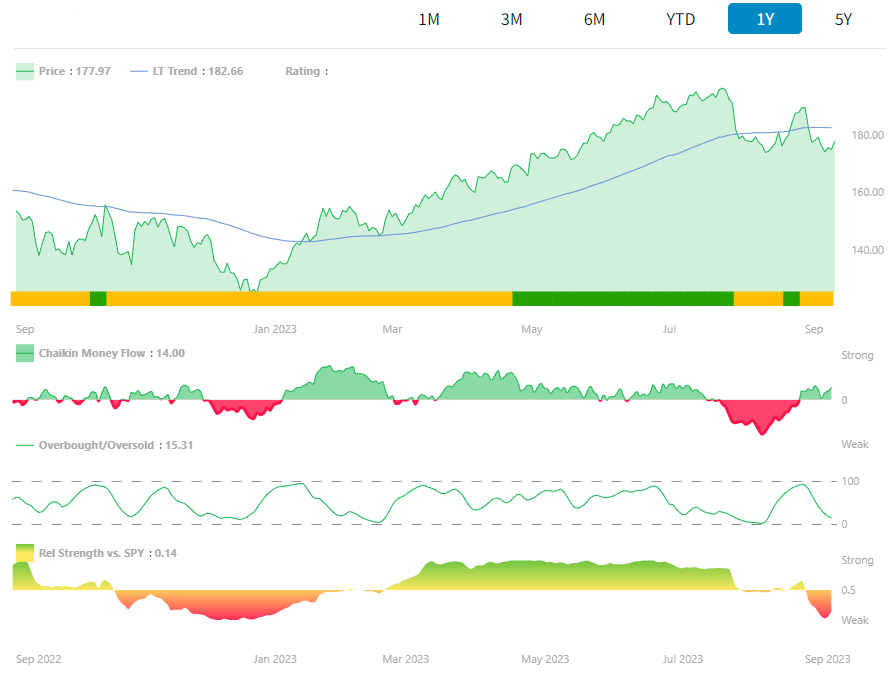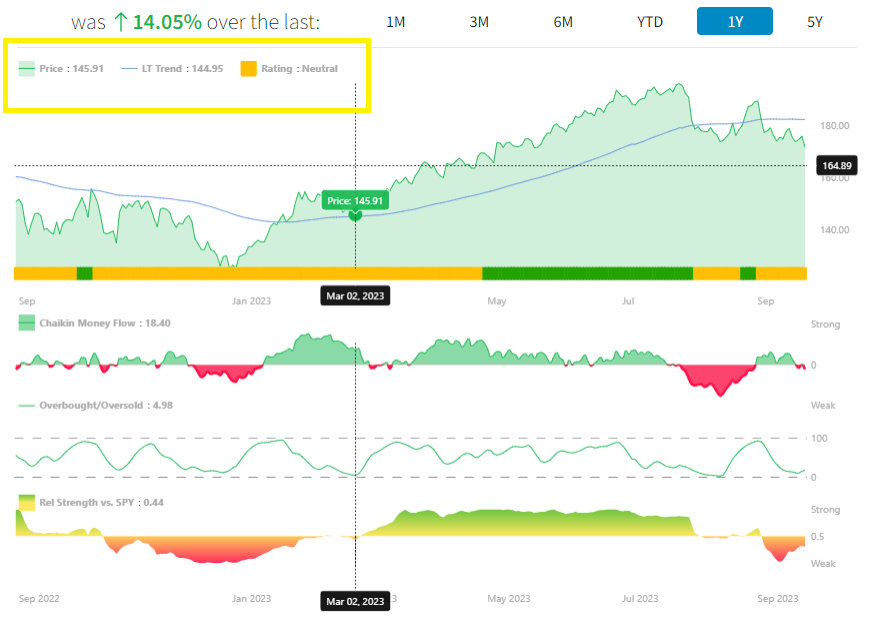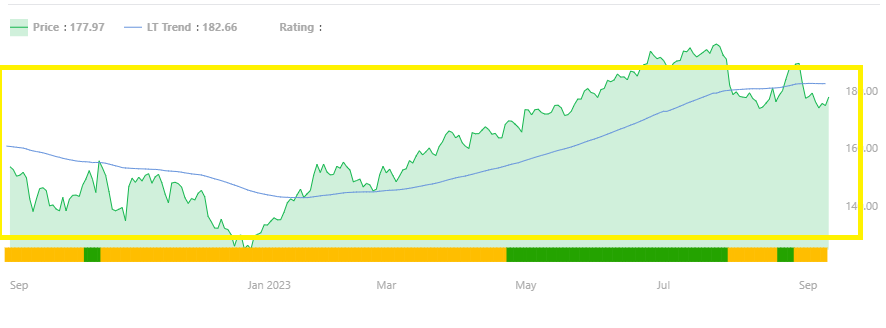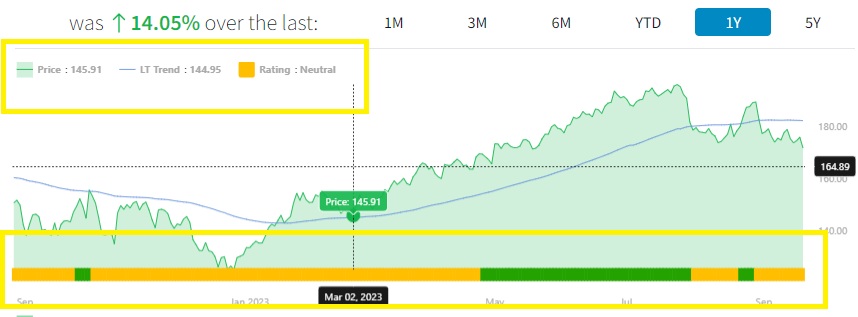Here's an interactive walkthrough of the Chaikin Chart
** Best experienced in Full Screen (click the icon in the top right corner before you begin) **
8 STEPS
As you explore a stock on our platform, you'll encounter a dynamic graph presenting key insights, including stock price trends, Power Gauge rating trend, Money Flow metrics, Overbought/Oversold conditions, and Relative Strength. This article serves as your guide to comprehending these critical indicators and leveraging them effectively in your investment strategies.

Date Based Information: As you navigate your mouse across the chart, specific dates will reveal themselves. These dates integrate with the information in the upper left corner, aligning with the details about price, long-term trends, and the power gauge rating. (Note: The rating shown here will display the Weekly Average Rating for 3 month, 6 month, Year to Date, 1 year, and 5 year charts and will display the daily Power Gauge Rating in the 1 month chart)

Historic Price Chart:
The area below shows the symbol’s historic, adjusted closing price for the corresponding date (adjusted for splits and corporate actions). The blue line that cuts across the chart is the Long Term Trend (LT Trend). It’s Moving Average calculation of the past 200 days that includes Marc’s proprietary math that is meant to give a sense of the long-term price direction.

Power Gauge Trend:
The Power Gauge Trend provides a historical perspective on a stock's performance, presenting the weekly average rating over time. As you hover your mouse over the chart, the date will dynamically appear, revealing the corresponding weekly average rating. In this intuitive visualization, red signifies a bearish sentiment, yellow indicates neutrality, and green signifies a bullish outlook. For a more granular assessment, explore the upper section of the graph, where you'll find small, color-coded boxes labeled as "ratings." These boxes offer a deeper dive into the specific rating for each trading week, providing a comprehensive picture of the stock's performance during that period.

Money Flow:
Chaikin Money Flow (CMF) is a financial metric used in technical analysis that measures the net accumulation (in green) or distribution (in red) of assets. CMF's scale ranges from +100 to -100, with a score of 100 indicating consistent daily high closes for 21 days, signaling strong buying interest. Values near +25 or -25 highlight robust accumulation or distribution trends, respectively. Chaikin Money Flow is a metric serving as a proxy for gauging institutional investor interest, providing insight into the sentiment and perception of a stock among institutional investors

Overbought/Oversold:
This indicator offers a clear, refined depiction of a stock's position within its typical trading range. The term "overbought" refers to a situation where a stock's price has experienced an excessive increase beyond what is supported by its technical analysis context, whereas "oversold" indicates the opposite scenario. The Chaikin OB/OS rating offers a refined and standardized assessment of where a stock stands within its typical trading range. This rating employs a scale ranging from 1 to 100, designating values of 70 or above as "overbought" and values of 30 or below as "oversold." When the OB/OS indicator falls below 30 and subsequently reverses course upwards, it can serve as a favorable entry point, particularly when corroborated by the Power Gauge. An Overbought condition is typically associated with a reading of 70.

Relative Strength:
This indicator gives a reliable signal of how a stock is doing compared to the S&P 500 index. When it turns green, it means the stock is performing exceptionally well compared to the overall market. Furthermore, when you examine Relative Strength on the SPY chart, it offers a comparison between SPY and IWV, which represents the Russell 3000 index, covering a wide range of large, mid, and small-cap stocks. Periods of strong or weak relative activity can signal a change in how the market views a stock, even before it affects the Power Gauge rating.
